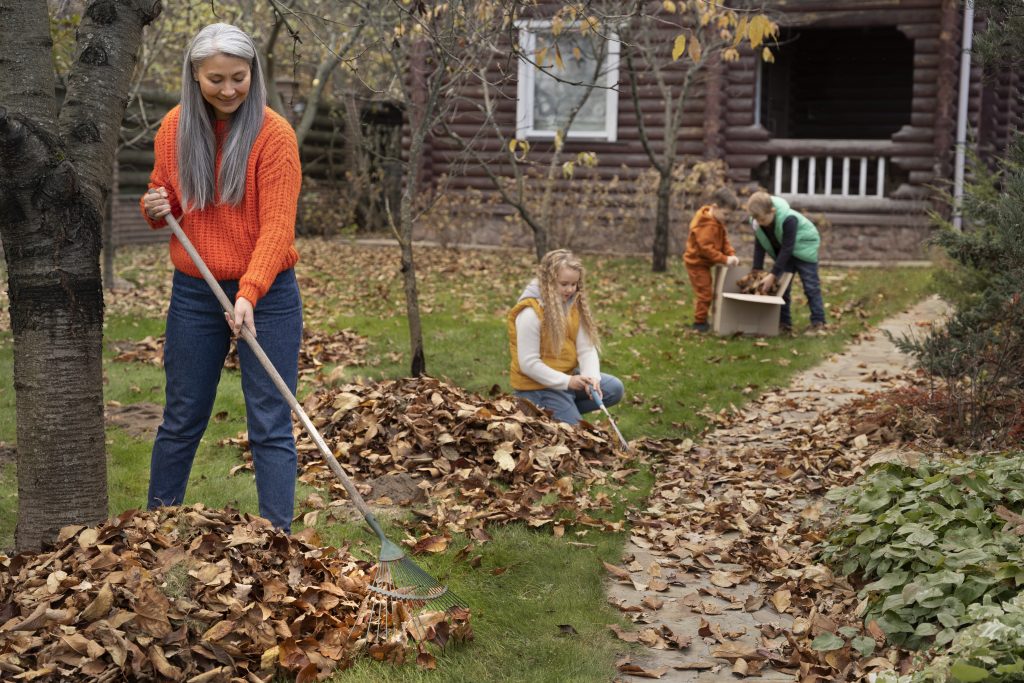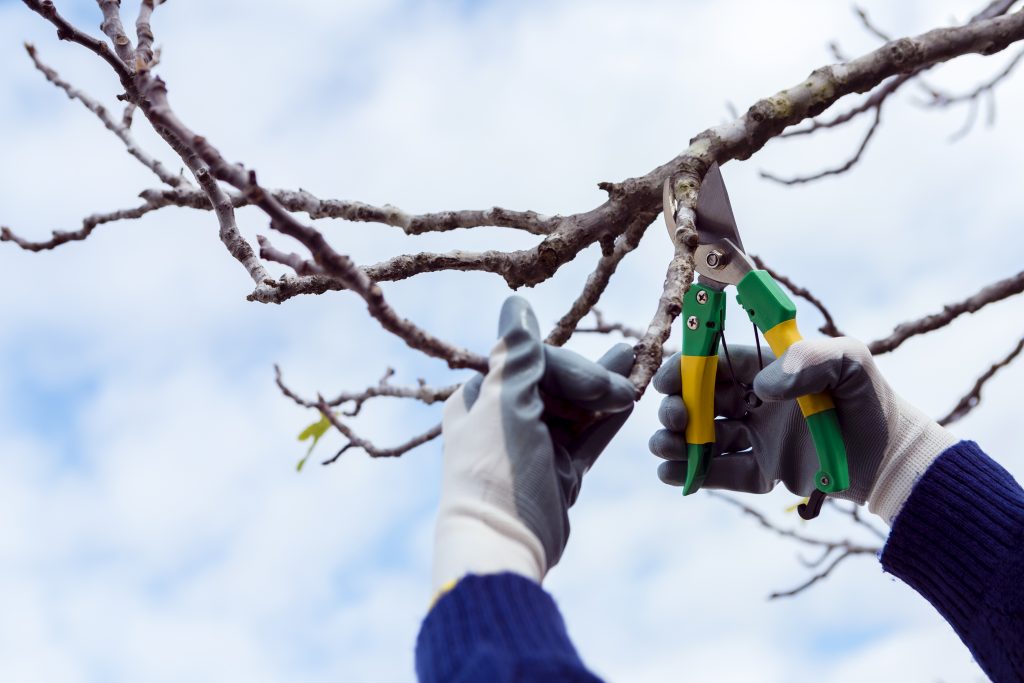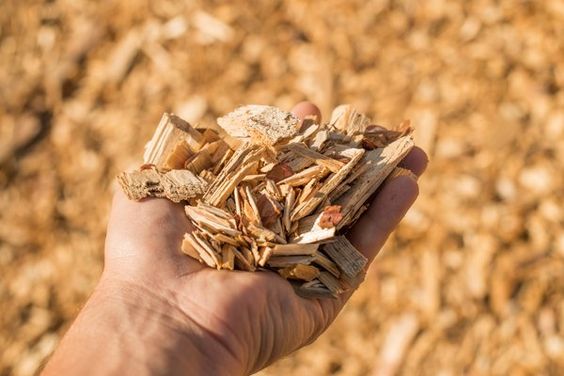Best Practices for Fall Tree Care
Fall tree care is of paramount importance as it directly impacts the health, vitality, and longevity of trees. As the growing season comes to an end and winter approaches, trees undergo significant physiological changes that require careful attention and maintenance. Implementing proper fall tree care practices not only enhances the well-being of individual trees but also contributes to the overall health of the ecosystem and the surrounding landscape. Here’s why fall tree care is crucial:

1. Winter Preparation: Trees need to be well-prepared to withstand the harsh conditions of winter, including freezing temperatures, heavy snow, and ice. Fall tree care helps fortify trees against these challenges, reducing the risk of damage and stress.
2. Root Health and Growth: While trees’ above-ground growth may slow down in the fall, their root systems continue to grow and develop. Adequate fall care, such as proper watering and soil management, ensures that roots receive the nutrients and moisture they need for optimal growth.
3. Disease Prevention: Fallen leaves can harbor diseases and pests that may affect trees in the following growing season. Proper leaf management and other fall care practices help prevent the spread of pathogens, reducing the risk of infections.
4. Structural Integrity: Fall is an ideal time for pruning to address structural issues, remove deadwood, and shape the tree’s canopy. Pruning promotes healthy growth and prevents the risk of falling branches during winter storms.
5. Nutrient Absorption: Fall fertilization provides trees with essential nutrients, which they absorb and store for use during the dormant winter months. This helps trees recover from any stresses they may have experienced during the growing season.
6. New Tree Establishment: Fall is also a suitable time for planting and transplanting trees. By planting in the fall, new trees have an opportunity to establish their root systems before winter, setting them up for a successful start in the following spring.
7. Prevention of Winter Stress: Trees can experience stress due to factors like drought, extreme temperatures, and pests. Fall tree care minimizes these stressors, helping trees enter the winter season in a healthier state.
8. Overall Tree Health: The collective impact of fall tree care practices contributes to the overall health of trees. Healthy trees are more resilient to environmental challenges, pests, and diseases, leading to longer lifespans and enhanced ecosystem services.
9. Aesthetic Value: Well-maintained trees add beauty and aesthetics to the landscape, even during the fall and winter months. Proper care ensures that trees remain visually appealing year-round.
10. Environmental Benefits: Healthy trees offer numerous environmental benefits, such as improved air quality, reduced erosion, and habitat for wildlife. Fall tree care contributes to these benefits by maintaining the health and functionality of trees.
Key Practices For Maintaining Tree Health
Maintaining tree health is crucial for the longevity, vitality, and overall well-being of trees. By implementing key practices, property owners and arborists can ensure that trees thrive and provide their full range of ecological, aesthetic, and functional benefits.
Here are some essential practices for maintaining tree health:
1. Regular Watering: Provide consistent and adequate water to trees, especially during dry periods. Deep, infrequent watering encourages root growth and prevents stress.
2. Proper Mulching: Apply a layer of organic mulch around the base of trees to conserve moisture, regulate soil temperature, and suppress weeds. Avoid piling mulch against the trunk, as this can lead to moisture retention and rot.
3. Soil Health Management: Maintain healthy soil by conducting soil tests to determine nutrient deficiencies and pH levels. Amend soil as needed to provide essential nutrients and improve drainage.
4. Pruning and Deadwood Removal: Regularly prune trees to remove dead, diseased, or crossing branches. Proper pruning enhances structural integrity, reduces disease risk, and improves air circulation.
5. Pest and Disease Monitoring: Keep a watchful eye for signs of pests and diseases. Early detection allows for timely intervention, reducing the impact of infestations or infections.
6. Proper Planting Techniques: Plant trees correctly by digging proper planting holes, ensuring the root flare is at the soil level, and providing appropriate spacing. Proper planting establishes a strong foundation for healthy growth.
7. Fertilization: Apply fertilizers tailored to the specific nutrient needs of trees. A balanced nutrient supply supports healthy growth, foliage development, and overall vigor.
8. Integrated Pest Management (IPM): Adopt IPM strategies that prioritize preventive measures, cultural practices, and targeted treatments for pest management. Minimize the use of chemical pesticides.
9. Air and Light Circulation: Prune trees to create a well-ventilated canopy that allows air and sunlight to penetrate. This reduces the risk of fungal infections and improves overall tree health.
10. Avoid Soil Compaction: Avoid heavy equipment or construction near tree roots, as soil compaction can impede root growth and nutrient uptake.
11. Monitoring and Observation: Regularly inspect trees for signs of stress, disease, or pest activity. Early detection enables timely response and mitigation.
12. Fall and Winter Care: Implement fall care practices such as proper mulching, watering, and pruning. These practices prepare trees for winter and minimize stress.
13. Consulting Arborists: Seek the advice of certified arborists for professional assessments, recommendations, and treatments. Arborists have expertise in diagnosing and managing tree health issues.
14. Avoid Overcrowding: Ensure that trees have adequate space to grow without competing with each other for resources. Proper spacing promotes optimal growth and prevents stress.
15. Wildlife Management: Implement measures to protect trees from damage caused by wildlife, such as deer or rodents. Physical barriers or repellents can be used.
16. Avoid Soil Compaction: Avoid heavy equipment or construction near tree roots, as soil compaction can impede root growth and nutrient uptake.
Maintaining tree health requires a proactive and holistic approach. By incorporating these key practices into your tree care routine, you can promote the well-being of trees, enhance their aesthetic value, and contribute to a healthier environment.
Preparing Trees for Winter

Preparing trees for winter is a crucial aspect of tree care that helps ensure their survival, health, and vitality through the cold months. Proper winter preparation reduces the risk of winter-related stress, damage, and diseases. Here are essential steps to prepare trees for winter:
• Watering: Adequate moisture is crucial before winter sets in. Continue watering trees until the ground freezes, ensuring that they enter the dormant season well-hydrated. This helps prevent dehydration and root damage.
• Mulching: Apply a layer of organic mulch around the base of the tree, extending to the drip line. Mulch insulates the soil, regulates temperature fluctuations, retains moisture, and protects roots from freezing.
• Pruning: Remove dead, diseased, or weak branches through proper pruning. Pruning helps prevent snow and ice accumulation on branches, reducing the risk of breakage.
• Structural Pruning: Consider structural pruning to improve the tree’s overall form and balance. Pruning away co-dominant stems or crossing branches minimizes the risk of winter breakage.
• Fertilization: Apply a balanced, slow-release fertilizer in the fall to provide essential nutrients that trees can absorb before going dormant. This supports root growth and overall winter hardiness.
• Protection from Animals: Wrap tree trunks with tree guards or burlap to prevent damage from rodents, deer, or other animals that may chew on bark during winter when food is scarce
• Salt Avoidance: Protect trees from de-icing salts by choosing salt-tolerant species or using alternative de-icing methods. Salt can damage tree roots and lead to stress.
• Wind Protection: In windy areas, consider windbreaks or burlap wraps to shield trees from drying winds that can cause desiccation.
• Sunscald Prevention: Apply white tree wrap or paint on the lower trunk to prevent sunscald, a condition where winter sun heats the bark and causes damage.
• Soil Moisture Management: Ensure proper drainage to prevent waterlogged soil that can damage roots during freeze-thaw cycles. Avoid overwatering as frozen soil can hinder root uptake.
• Avoid Heavy Equipment: Refrain from driving or parking heavy equipment or vehicles near trees. Compacted soil can harm root systems.
• Girdling Roots Inspection: Check for girdling roots that can constrict the trunk and inhibit nutrient flow. Addressing girdling roots before winter prevents further stress.
• Monitor for Pests and Diseases: Inspect trees for signs of pests and diseases, and consider appropriate treatments before winter arrives.
• Winter Sunlight: Ensure trees have access to sunlight during winter, as they can photosynthesize and generate energy on warmer days.
• Snow Load Reduction: Shake off accumulated snow from branches during heavy snowfalls to prevent breakage.
• Consult an Arborist: If you’re unsure about the health or preparation of your trees, consult a certified arborist for professional advice and recommendations.
Properly preparing trees for winter enhances their resilience and increases the likelihood of a healthy spring growth period. By implementing these practices, you contribute to the long-term health and survival of your trees.
Pruning and deadwood removal are essential tree care practices that contribute to the health, safety, and aesthetics of trees. Proper pruning involves selectively removing branches to improve tree structure, promote healthy growth, and prevent potential hazards. Deadwood removal focuses on eliminating dead or dying branches that can pose risks to people, property, and the tree itself. Here’s why pruning and deadwood removal are important and how they are carried out:
Importance of Pruning:

• Structural Integrity: Pruning helps develop a strong and balanced tree structure. Removing weak, crossing, or competing branches reduces the risk of breakage during storms or under heavy loads.
• Health and Vigor: Pruning promotes better air circulation and sunlight penetration through the canopy, reducing the risk of fungal diseases and promoting overall tree health.
• Aesthetics: Proper pruning enhances the visual appeal of trees by shaping them and maintaining a natural form. Well-pruned trees contribute to a well-maintained landscape.
• Fruit Production: Fruit-bearing trees benefit from strategic pruning, which improves fruit quality, size, and yield by redirecting energy to fruit-bearing branches.
• Safety: Pruning removes branches that are dead, diseased, or hanging precariously, reducing the risk of falling debris that can cause injuries or damage.
Importance of Deadwood Removal:
1. Risk Reduction: Dead or dying branches are more susceptible to breakage, posing hazards to people and property below. Removing deadwood minimizes this risk.
2. Disease Prevention: Deadwood can attract pests and fungi, which can spread to healthy parts of the tree. Removing deadwood prevents disease transmission.
3. Aesthetic Enhancement: Deadwood can be unsightly and detract from the tree’s overall appearance. Removing it contributes to a cleaner and healthier appearance.
Pruning Techniques:
• Thinning: Removing selected branches from the interior of the canopy to improve light penetration and air circulation.
• Crown Cleaning: Removing dead, diseased, or broken branches throughout the canopy.
• Crown Raising: Removing lower branches to increase clearance under the tree, useful for pedestrian traffic or vehicles.
• Crown Reduction: Reducing the overall size of the tree’s canopy by selectively cutting branches. This is often done to mitigate hazards or manage tree height.
Deadwood Removal Techniques:
• Selective Pruning: Arborists identify and remove dead branches using pruning cuts that preserve the tree’s health and aesthetics.
• Clean Cuts: Branches are removed close to the collar—the swollen area where the branch meets the trunk—to promote efficient healing.
• Tools: Proper pruning tools, such as sharp hand pruners or loppers, are used to prevent unnecessary damage to the tree.
Considerations:
• Timing: Pruning can be performed year-round, but for deciduous trees, late fall to early spring (dormant season) is ideal to minimize stress.
• Expertise: Pruning should be done by trained arborists to ensure proper techniques and minimize potential damage.
• Tree Species: Different tree species have varying tolerance to pruning. Consult an arborist for species-specific recommendations.
About Murray, Utah
Murray is a city situated on the Wasatch Front in the core of Salt Lake Valley in the U.S. state of Utah. Named for territorial governor Eli Murray, it is the state's fourteenth largest city. According to the 2020 census, Murray had a population of 50,637. Murray shares borders with Taylorsville, Holladay, South Salt Lake and West Jordan, Utah. Once teeming with heavy industry, Murray's industrial sector now has little trace and has been replaced by major mercantile sectors. Known for its central location in Salt Lake County, Murray has been called the Hub of Salt Lake County. Unlike most of its neighboring communities, Murray operates its own police, fire, power, water, library, and parks and recreation departments and has its own school district. While maintaining many of its own services, Murray has one of the lowest city tax rates in the state.
Neighborhoods in Murray, Utah
Murray Oakes, Grant Park, Southwood Park, Murray Park, Murray Park Restrooms, Willow Pond Park, Neighborhood Veterinary Care
Things To Do in Murray, Utah
Bus Stops in Murray, Utah to Truco Services, Inc.
Bus Stop in Murray Central Station (Bay C) Murray, Utah to Truco Services, Inc.
Bus Stop in State St @ 4801 S Murray, Utah to Truco Services, Inc.
Bus Stop in Murray North Station Murray, Utah to Truco Services, Inc.
Bus Stop in State St @ 4949 S Murray, Utah to Truco Services, Inc.
Bus Stop in Murray Central Frontrunner/Trax Station Murray, Utah to Truco Services, Inc.
Bus Stop in Murray Blvd / Vine St (SB) Murray, Utah to Truco Services, Inc.
Bus Stop in State St @ 3925 S Murray, Utah to Truco Services, Inc.
Bus Stop in State St @ 4824 S Murray, Utah to Truco Services, Inc.
Bus Stop in State St @ 5223 S Murray, Utah to Truco Services, Inc.
Bus Stop in Murray Blvd / Allendale Dr (NB) Murray, Utah to Truco Services, Inc.
Bus Stop in Murray Blvd @ 5039 S Murray, Utah to Truco Services, Inc.
Bus Stop in State St @ 4721 S Murray, Utah to Truco Services, Inc.
Driving Directions in Murray, Utah to Truco Services, Inc.
Driving Directions from Woodruff Tree Trimming and Removal to 4640 Commerce Dr, Murray, UT 84107, USA
Driving Directions from Reliable Tree Care to 4640 Commerce Dr, Murray, UT 84107, USA
Driving Directions from Tree Pro-Tech to 4640 Commerce Dr, Murray, UT 84107, USA
Driving Directions from Prestige Tree And Landscape to 4640 Commerce Dr, Murray, UT 84107, USA
Driving Directions from Excellence Tree & Landscape to 4640 Commerce Dr, Murray, UT 84107, USA
Driving Directions from Amen Trees to 4640 Commerce Dr, Murray, UT 84107, USA
Driving Directions from Tim's Tree Care to 4640 Commerce Dr, Murray, UT 84107, USA
Driving Directions from Jordan Tree Service - Murray to 4640 Commerce Dr, Murray, UT 84107, USA
Driving Directions from Arbor Works to 4640 Commerce Dr, Murray, UT 84107, USA
Driving Directions from Diamond Tree Experts to 4640 Commerce Dr, Murray, UT 84107, USA
Driving Directions from Green Tree Arborist to 4640 Commerce Dr, Murray, UT 84107, USA
Driving Directions from TruCo Services to 4640 Commerce Dr, Murray, UT 84107, USA
Reviews for Truco Services, Inc. Murray, Utah
Emily Abercrombie
We had a great experience with TruCo! They were well priced, responsive and prompt. Michael was a pleasure to work with and gave us advice on which plants to put in where we took out our ugly old shrubs. I would highly recommend this company!!!
Michelle Turpin
TruCo Services gets 5 stars from us for customer service. We experienced a few issues with their services this last year and Rob Eccles in senior management, stepped in and immediately handled our issues. He was very committed to making sure they understood our expectations and would execute to make us happy.
Siobhan Billingsley
I work for a property management company and have the pleasure of working with Rob at a community in Sandy. He has been incredible to work with and always responds in a timely manner. He knows all the homeowners by name and address and is aware of all the "problem" areas when it comes to sprinklers. I never have to worry about following up with him because he always reaches out to provide me with an update. If you're looking to work with someone who takes pride in their job, is professional, and can solve the worst landscaping problems thrown your way, Rob is your guy. Thank you, Rob for all you do!
Jaime S.
We have used Truco at 2 of the complexes we manage, they have been great to work with. Good quality service, outstanding customer service with good communication. That's hard to find these days. I highly recommend them. Travis has been awesome to work with.
Jerusha Smart
We use TruCo for a majority of our properties and our home. While other landscaping companies we use come and go for various reasons like cost, communication issues, work performance, etc., TruCo is always consistent in price and work. Also, Rob is the best.

